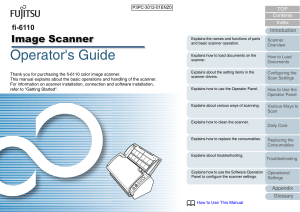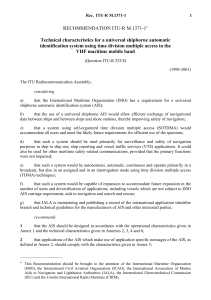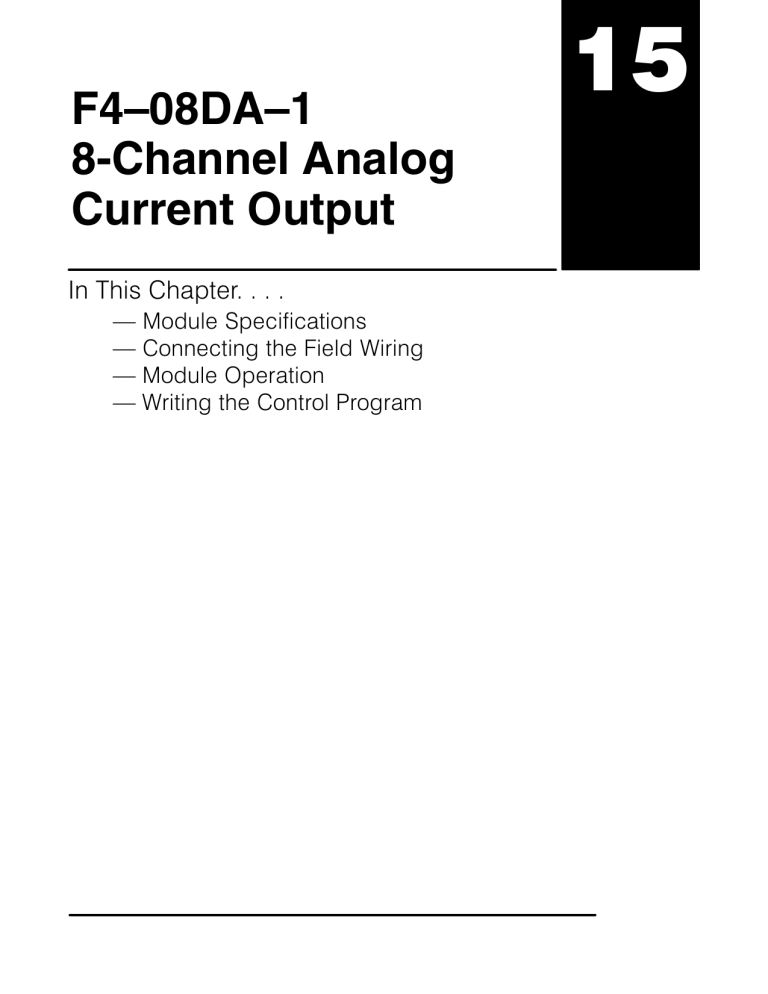
F4–08DA–1 8-Channel Analog Current Output In This Chapter. . . . Ċ Module Specifications Ċ Connecting the Field Wiring Ċ Module Operation Ċ Writing the Control Program 15 15–2 F4–08DA–1 8-Ch. Analog Current Output Module Specifications ANALOG The F4–08DA–1 Analog Current Output Module provides several features and benefits. S It provides eight channels of 4–20 mA single ended current outputs. S Analog outputs are optically isolated from PLC logic components. S The module has a removable terminal block, so the module can be easily removed or changed without disconnecting the wiring. S From one to eight analog outputs may be updated in one CPU scan (DL440 and DL450 CPUs only). S No jumper settings are required. OUTPUT F4–08DA–1 4mA–20mA CH2 –I CH4 –I CH6 –I CH8 –I CH1 –I CH3 –I CH5 –I CH7 –I 0V 0V + 24 VDC 0.1 A – Analog Output Configuration Requirements The F4–08DA–1 Analog Output requires 16 discrete output points in the CPU. The module can be installed in any slot of a DL405 system, including remote bases. The limitations on the number of analog modules are: S For local and expansion systems, the available power budget and discrete I/O points. S For remote I/O systems, the available power budget and number of remote I/O points. F4–08DA–1 8-Ch. Analog Output Check the user manual for your particular model of CPU for more information regarding power budget and number of local or remote I/O points. F4–08DA–1 8-Ch. Analog Current Output 15–3 The following tables provide the specifications for the F4–08DA–1 Analog Output Module. Review these specifications to ensure the module meets your application requirements. Output Specifications General Module Specifications 8, single ended (one common) Output Range 4–20 mA current Resolution 12 bit (1 in 4095) Output Type Outputs sink 4–20 mA from external supply Peak Output Voltage 40 VDC (no transient voltage suppression) External Load Resistance 0–480 at 18V, 220–740at 24V, 1550–1760 at 48V Maximum Loop Supply 48 VDC (with load resistance in proper range) Crosstalk –70 dB, $1 count maximum Linearity Error (end-to-end) and Relative Accuracy $1 count maximum Full Scale Calibration Error (offset error included) $8 counts maximum (20mA at 25_C) Offset Calibration Error $3 counts maximum (4mA at 25_C) Maximum Inaccuracy $0.2% at 25_C (77°F) $0.4% at 0 to 60_C (32 to140°F) Conversion Time 400 s maximum, for full scale change 2.25 to 4.5 mS for digital output to analog out Digital Output Points Required 16 point (Y) outputs, 12 bits binary data, 3 bits channel select, 1 bit output enable Power Budget Requirement 90 mA at 5 VDC (supplied by base power supply) External Power Supply 21.6-26.4 VDC, 100 mA, class 2 (add 20 mA for each current loop used) Accuracy vs. Temperature $57 ppm / _C full scale calibration range (including maximum offset change, 2 counts) Operating Temperature 0 to 60_C (32 to 140°F) Storage Temperature –20 to 70_C (–4 to 158°F) Relative Humidity 5 to 95% (non-condensing) Environmental Air No corrosive gases permitted Vibration MIL STD 810C 514.2 Shock MIL STD 810C 516.2 Noise Immunity NEMA ICS3-304 F4–08DA–1 8-Ch. Analog Output Number of Channels 15–4 F4–08DA–1 8-Ch. Analog Current Output Connecting the Field Wiring Wiring Guidelines Your company may have guidelines for wiring and cable installation. If so, you should check those before you begin the installation. Here are some general things to consider. S Use the shortest wiring route whenever possible. S Use shielded wiring and ground the shield at the module or the power supply return (0V). Do not ground the shield at both the module and the transducer. S Do not run the signal wiring next to large motors, high current switches, or transformers. This may cause noise problems. S Route the wiring through an approved cable housing to minimize the risk of accidental damage. Check local and national codes to choose the correct method for your application. User Power Supply Requirements The F4–08DA–1 requires at least one field-side supply. You may use the same or separate power sources for the module supply and loop supply. The module requires 21.6 – 26.4 VDC, Class 2, 100mA current. The eight current loops require 18 to 48 VDC, at 20 mA each. The DL430/440/450 CPUs, D4–RS Remote I/O Controller, and D–EX Expansion Units have built-in 24 VDC power supplies that provide up to 400mA of current. You may use one of these instead of a separate supply if there is only a couple of analog modules. The current required is 100 mA (module), plus 160 mA (eight current loops) for a total of 260 mA. In some situations it is desirable to power the loops separately due to power budget or due to their remote location from the PLC. This will work, as long as the loop supply meets the voltage and current requirements, and its minus (–) side and the module supply’s minus (–) side connect together. Load Requirements Each channel in use must have a load impedance of 0–480 at 18V, 220–740 @ 24V, or 1550–1760 at 48V. Unused channels must be left disconnected. F4–08DA–1 8-Ch. Analog Output WARNING: If you are using the 24 VDC base power supply, make sure you calculate the power budget. Exceeding the power budget can cause unpredictable system operation that can lead to a risk of personal injury or damage to equipment. F4–08DA–1 8-Ch. Analog Current Output Removable Connector Wiring Diagram 15–5 The F4–08DA–1 module has a removable connector to make wiring easier. Simply loosen the retaining screws and gently pull the connector from the module. The diagram shows separate module and loop supplies for channel 8. If you desire to use only one field-side supply, just combine the supplies’ positive terminals into one node, and remove the loop supply. NOTE 1: Shields should be connected to the 0V of the User Power Supply at the module terminal block. NOTE 2: Unused current outputs should remain open (no connections). ANALOG OUTPUT Typical User Wiring F4–08DA–1 CH1 0–1K ohms CH2 0–1K ohms Current Output Current Output (same) See NOTE 1 CH1 CH2 CH3 4–20mA current sinking (same) D/A CH4 CH5 CH7 D/A (same) D/A D/A 4–20mA curr. sinking Current Output D/A D/A CH8 0–1K ohms D/A D/A CH6 CH8 4mA–20mA Internal module circuitry CH2 –I CH4 –I CH6 –I CH8 –I CH1 –I CH3 –I CH5 –I CH7 –I 0V 0V 24V 0V + – 18–48 VDC Optional Loop Supply + – User Supply 21.6 – 26.4 VDC 100mA Internal DC/DC Converter 0V 0V + 24 VDC 90mA – Add 20mA for each 4–20mA loop powered from this supply. F4–08DA–1 8-Ch. Analog Output 15–6 F4–08DA–1 8-Ch. Analog Current Output Module Operation DL430 Special Requirements Even though the module can be placed in any slot, it is important to examine the configuration if you are using a DL430 CPU. As you’ll see in the section on writing the program, you use V-memory locations to send the analog data. As shown in the following diagram, if you place the module so the output points do not start on a V-memory boundary, the instructions cannot access the data. F4–08DA–1 Correct! 8pt Output Y0 – Y7 8pt Output 16pt Output 16pt Output 16pt Input 16pt Input Y10 Y20 Y40 – – – Y17 Y37 Y57 V40500 V40502 V40501 MSB LSB Y 3 7 YY 3 2 0 7 F4–08DA–1 Wrong! 8pt Output Y0 – Y7 F4–08DA–1 8-Ch. Analog Output Y 2 0 16pt Output 8pt Output 16pt Output 16pt Input 16pt Input Y10 Y30 Y40 – – – Y27 Y37 Y57 Data is split over two locations, so instructions cannot access data from a DL430. MSB Y 3 7 V40501 Y Y 3 2 0 7 LSB Y 2 0 MSB Y 1 7 V40500 Y Y 1 7 0 LSB Y 0 F4–08DA–1 8-Ch. Analog Current Output 15–7 Before you begin writing the control program, it is important to take a few minutes to understand how the module processes and represents the analog signals. Channel Scanning Sequence The F4–08DA–1 module allows you to update the channels in any order. Your control program determines which channels get updated on any given scan. A typical ladder program will update one channel per CPU scan. So, all eight channels can be updated every eight scans. With a DL440 or DL450 CPU, you can use Immediate instructions to update all eight channels in the same scan (we’ll show you how to do this later). Scan Read inputs Execute Application Program Scan N Channel 1 Scan N+1 Channel 2 Scan N+2 Channel 3 Scan N+3 Channel 4 Scan N+4 Channel 5 Scan N+5 Channel 6 Scan N+6 Channel 7 Scan N+7 Channel 8 Scan N+8 Channel 1 Calculate the data Write data Write to outputs F4–08DA–1 8-Ch. Analog Output 15–8 F4–08DA–1 8-Ch. Analog Current Output Output Bit Assignments You may recall the F4–08DA–1 module requires 16 discrete output points from the CPU. These points provide: S The digital representation of one analog signal per scan. S Identification of the channel that is to receive the data. S Output enable control for all channels. Since all output points are automatically mapped into V-memory, it is very easy to determine the location of the data word that will be assigned to the module. F4–08DA–1 8pt Output Y0 – Y7 8pt Output 16pt Output 16pt Output 16pt Input 16pt Input Y10 Y20 Y40 – – – Y17 Y37 Y57 V40500 V40502 V40501 MSB Bit 15 14 13 12 11 10 9 Y 3 7 F4–08DA–1 8-Ch. Analog Output Channel Select Bits LSB 8 7 6 Y Y 3 2 0 7 5 4 3 2 1 0 Y 2 0 Within this V-memory location the individual bits represent specific information about the channel selected and the analog signal. Output bits 12, 13, and 14 of the data word are the channel select outputs. They are binary encoded to select the channel from 1 to 8 that will be updated with the data. Bit 14 Off Off Off Off On On On On Bit 13 Off Off On On Off Off On On Bit 12 Off On Off On Off On Off On V40501 Channel 1 2 3 4 5 6 7 8 MSB LSB 1 1 1 1 11 9 8 7 6 5 4 3 2 1 0 5 4 3 2 10 – Channel Select Bits 15–9 F4–08DA–1 8-Ch. Analog Current Output Output Enable Bit Analog Data Bits Module Resolution Output bit 15 is the Output Enable control bit for all eight channels. When the bit is off, all eight channel output currents decrease to their lowest level, which is 4 mA for connected loads. Disabling the outputs also clears all eight output data registers. To resume analog output levels, first the Output Enable control bit must turn on. Then, the CPU must write new data to each channel to restore the output current for that channel. The first twelve bits of the data word represent the analog data in binary format. Bit Value Bit Value 0 1 6 64 1 2 7 128 2 4 8 256 3 8 9 512 4 16 10 1024 5 32 11 2048 Since the module has 12-bit resolution, the analog signal is made of 4096 counts ranging from 0–4095 (212). For the 4 to 20 mA scale, sending a 0 produces a 4 mA signal, and 4095 gives a 20 mA signal. This is equivalent to a binary value of 0000 0000 0000 to 1111 1111 1111, or 000 to FFF hexadecimal. The graph to the right shows the linear relationship between the data value and output signal level. Signal Range 4 to 20mA LSB 1 1 1 1 11 9 8 7 6 5 4 3 2 1 0 5 4 3 2 10 – Output Enable Bit OFF = Disable (and clear) ON = Enable V40501 MSB LSB 1 1 1 1 11 9 8 7 6 5 4 3 2 1 0 5 4 3 2 10 – data bits 20mA 4mA 0 4095 Resolution + H * L 4095 H = high limit of the signal range L = low limit of the signal range Span (H – L) Divide By Smallest Change 16mA 4095 3.91 A F4–08DA–1 8-Ch. Analog Output Each count can also be expressed in terms of the signal level by using the equation shown. The following table shows the smallest signal change that occurs when the digital value is increased by 1 LSB. V40501 MSB 15–10 F4–08DA–1 8-Ch. Analog Current Output Writing the Control Program Update Any Channel As mentioned earlier, you can update any channel per scan using regular I/O instructions, or any number of channels per scan using Immediate I/O instructions. The following diagram shows the data locations for an example system. You use the channel select outputs to determine which channel gets updated (more on this later). F4–08DA–1 8pt Output Y0 – Y7 8pt Output 16pt Output 16pt Output 16pt Input 16pt Input Y10 Y20 Y40 – – – Y17 Y37 Y57 V40500 V40502 V40501 MSB Output Enable Bit LSB Data Bits Channel Select Bits F4–08DA–1 8-Ch. Analog Output Calculating the Digital Value Your program has to calculate the digital value to send to the analog module. There are many ways to do this, but most applications are understood more easily if you use measurements in engineering units. This is accomplished by using the conversion formula shown. You may have to make adjustments to the formula depending on the scale you choose for the engineering units. Consider the following example which controls pressure from 0.0 to 99.9 PSI. By using the formula, you can easily determine the digital value that should be sent to the module. The example shows the conversion required to yield 49.4 PSI. Notice the formula uses a multiplier of 10. This is because the decimal portion of 49.4 cannot be loaded, so you adjust the formula to compensate for it. A + U 4095 H*L A = analog value (0 – 4095) U = engineering units H = high limit of the engineering unit range L = low limit of the engineering unit range A + 10U 4095 10(H * L) A + 494 4095 1000 * 0 A + 2023 F4–08DA–1 8-Ch. Analog Current Output 15–11 Here is how you would write the program to perform the engineering unit conversion. This example assumes you have calculated or loaded the engineering unit value and stored it in V3000. Also, you have to perform this for all eight channels if you are using different data for each channel. NOTE: The DL405 offers various instructions that allow you to perform math operations using binary, BCD, etc. It’s usually easier to perform any math calculations in BCD and then convert the value to binary before you send the data to the module. If you are using binary math, you do not have to include the BIN conversion. X1 LD V3000 When X1 is on, the engineering units (stored in V3000) are loaded into the accumulator. This example assumes the numbers are BCD. MUL K4095 Multiply the accumulator by 4095 (to start the conversion). DIV K1000 Divide the accumulator by 1000 (because we used a multiplier of 10, we have to use 1000 instead of 100). Convert the BCD number to binary. BIN Store the result in V3101. This is the digital value, in binary form, that should be sent to the module. OUT V3101 V-Memory Registers The ladder program examples that follow occasionally use certain V-memory register addresses in the CPU that correspond to 16-bit Y output modules. Use the table below to find the V-memory address for the particular slot of your analog module. See Appendix A for additional addresses available in the DL450 CPU. V-Memory Register Addresses for 16-Point Output (Y) Locations Y 000 020 040 060 100 120 140 160 200 220 V 40500 40501 40502 40503 40504 40505 40506 40507 40510 40511 Y 240 260 300 320 340 360 400 420 440 460 V 40512 40513 40514 40515 40516 40517 40520 40521 40522 40523 F4–08DA–1 8-Ch. Analog Output 15–12 F4–08DA–1 8-Ch. Analog Current Output Sending Data to One Channel 5 4 4 430 440 450 The following programs show you how to update a single channel. Notice the DL430 CPU requires a slightly different program than the DL440/DL450 CPUs. Since the DL430 does not support the OUTF instruction, the program must be modified to make sure the channel select bits are not accidentally changed by the data in the accumulator. These examples assume you already have the data loaded in V3001. DL440/450 Example SP1 LD V3001 The LD instruction loads the data for channel 1 into the accumulator. Since SP1 is used, this rung automatically executes on every scan. You could also use an X, C, etc. permissive contact. BIN The BIN instruction converts the accumulator data to binary (you must omit this step if you’ve already converted the data elsewhere). OUTF Y20 K12 The OUTF sends the 12 bits to the data word. Our example starts with Y20, but the actual value depends on the location of the module in your application. Y36 RST Y35 RST Select Channel Y34 RST Turn Y36, Y35, and Y34 off to update Channel 1. Y36 Y35 Y34 Channel Off Off Off Off On On On On Off Off On On Off Off On On Off On Off On Off On Off On Ch. 1 Ch. 2 Ch. 3 Ch. 4 Ch. 5 Ch. 6 Ch. 7 Ch. 8 Y37 Enable Outputs 4 4 4 430 440 450 SP1 SET DL430 Example LD V3001 The LD instruction loads the data for channel 1 into the accumulator. Since SP1 is used, this rung automatically executes every scan. You could also use an X, C, etc. permissive contact. BIN The BIN instruction converts the accumulator data to binary (you must omit this step if you’ve already converted the data elsewhere). The ANDD instruction masks off the channel select bits to prevent an accidental channel selection. ANDD KFFF OUT V40501 F4–08DA–1 8-Ch. Analog Output Y36 RST Y35 Select Channel RST Y34 SET Y37 Enable Outputs Turn on Y37 to enable all eight output channels. SET The OUT instruction sends the data to the module. Our example starts with V40501, but the actual value depends on the location of the module in your application. Turn Y36, Y35, and Y34 off to update Channel 1. Y36 Y35 Y34 Channel Off Off Off Off On On On On Off Off On On Off Off On On Off On Off On Off On Off On Ch. 1 Ch. 2 Ch. 3 Ch. 4 Ch. 5 Ch. 6 Ch. 7 Ch. 8 Turn on Y37 to enable all eight output channels. F4–08DA–1 8-Ch. Analog Current Output Sequencing the Channel Updates 15–13 The next four example programs show you how to send digital values to the module when you have more than one channel. These examples will automatically update all eight channels over eight scans. The first two sequencing examples, examples 1 and 2, are fairly simple and will work in almost all situations. We recommend these for new users. They use control relays C1 through C8 as index numbers corresponding to the channel updated on any particular scan. At the end of each scan, only one control relay C1 through C8 is on. On each subsequent scan, the next control relay energizes. The channel sequencing automatically begins with channel 1 on the first scan, or after any disruption in the logic. You must use example 2 with DL430 CPUs. Either example will work with DL440 or DL450 CPUs. The next two examples, 3 and 4, are slightly more complex. However, they do not depend on the use of control relays to provide channel sequencing. Instead, they use function boxes to increment a channel pointer value in V-memory. Then, other instructions perform bit manipulations to position the channel select bits properly in the output word to the module. You must use example 4 with DL430 CPUs. Either example will work with DL440 or DL450 CPUs. In the fifth example, we show you how you can update all eight channels in the same scan with DL440 and DL450 CPUs. However, this can increase the scan time and you may not always need to update all eight channels on every scan. In the last example, we show you how you can update a single channel during the scan with DL440 and DL450 CPUs using the Immediate instructions. F4–08DA–1 8-Ch. Analog Output 15–14 F4–08DA–1 8-Ch. Analog Current Output Sequencing Example 1, DL440/450 5 4 4 430 440 450 The following program example shows how to send digital values to the module when you have more than one channel. This example assumes you have already loaded the data according to the following table. It is important to use the rungs in the order shown for the program to work. This example will not work with DL430 CPUs. V-Memory Locations for Output Data in Examples 1 and 2 Channel Number V–Memory Storage 1 2 3 4 5 6 7 8 3000 3001 3002 3003 3004 3005 3006 3007 Ch8 Done C10 C0 OUT Ch7 Done C7 When channel 8 is updated, C0 restarts the update sequence. When channel 7 has been updated, this rung loads the data for channel 8 into the accumulator. LD V3007 C10 OUT Ch6 Done C6 Turning on C10 triggers the channel update (see the channel select rungs). When channel 6 has been updated, this rung loads the data for channel 7 into the accumulator. LD V3006 C7 OUT Ch5 Done C5 Turning on C7 triggers the channel update (see the channel select rungs). When channel 5 has been updated, this rung loads the data for channel 6 into the accumulator. LD V3005 C6 OUT F4–08DA–1 8-Ch. Analog Output Ch4 Done C4 Turning on C6 triggers the channel update (see the channel select rungs). When channel 4 has been updated, this rung loads the data for channel 5 into the accumulator. LD V3004 C5 OUT Turning on C5 triggers the channel update (see the channel select rungs). F4–08DA–1 8-Ch. Analog Current Output Example 1 Continued Ch3 Done C3 When channel 3 has been updated, this rung loads the data for channel 4 into the accumulator. LD V3003 C4 OUT Ch2 Done C2 C3 C2 C1 Turning on C3 triggers the channel update (see the channel select rungs). When channel 1 has been updated, this rung loads the data for channel 2 into the accumulator. LD V3001 OUT Restart C0 Turning on C4 triggers the channel update (see the channel select rungs). When channel 2 has been updated, this rung loads the data for channel 3 into the accumulator. LD V3002 OUT Ch1 Done C1 15–15 Turning on C2 triggers the channel update (see the channel select rungs). This rung loads the data for channel 1 into the accumulator. C0 restarts the sequence after channel 8 is done (see the top rung). The first scan or any interruption in control relay sequencing is detected when control relays C1 through C10 are off (all eight contacts not shown here due to space constraints). In this case, we also start the sequence with channel 1. LD V3000 C2 thru C10 C1 OUT Turning on C1 triggers the channel update (see the channel select rungs). Output the Data SP1 (Replace this portion of the program when using the DL430 Example 2) BIN OUTF Y20 K12 This rung converts the accumulator data for all channels (one per scan) to binary (you must omit this step if you’ve already converted the data elsewhere). It also loads the data to the appropriate bits of the data word. Our example starts with Y20, but the actual value depends on the location of the module in your application. F4–08DA–1 8-Ch. Analog Output 15–16 F4–08DA–1 8-Ch. Analog Current Output Example 1 Continued C2 Select Channel, Binary Encoded Y34 OUT Set Y36, Y35, and Y34 to the binary code which selects the output channel 1 through 8, based on the control relay status. C4 C6 C10 C3 Select Channel, cont’d Y35 OUT Select Channel, cont’d Y36 OUT Enable Outputs Y37 OUT CR(on) Y36 Y35 Y34 Channels C1 C2 C3 C4 C5 C6 C7 C10 Off Off Off Off On On On On Off Off On On Off Off On On Off On Off On Off On Off On Ch. 1 Ch. 2 Ch. 3 Ch. 4 Ch. 5 Ch. 6 Ch. 7 Ch. 8 C4 C7 C10 C5 C6 C7 C10 F4–08DA–1 8-Ch. Analog Output SP1 Enable all channels. SP1 is always on. F4–08DA–1 8-Ch. Analog Current Output Sequencing Example 2, DL430 4 4 4 430 440 450 15–17 Since the DL430 does not support the OUTF instruction, the previous program must be modified to make sure the channel select bits or the output enable bits are not accidentally changed by the data in the accumulator. Replace the “Output the Data” rung in the middle of Example 1 with the new rung below. Be sure to retain the original order of the rungs shown in Example 1 for the program to work. This example will also work with DL440 and DL450 CPUs. Output the Data SP1 BIN ANDD KFFF OUT V40501 This rung converts the accumulator data for channels 1 through 8 (one per scan) to binary (You must omit this step if you’ve already converted the data elsewhere). The ANDD instruction masks off the channel select bits to prevent an accidental channel selection. The OUT instruction sends the data to the module. Our example starts with V40501 for the first bank of 8 channels, but the actual value depends on the location of the module in your application. F4–08DA–1 8-Ch. Analog Output 15–18 F4–08DA–1 8-Ch. Analog Current Output Sequencing Example 3, DL440/450 5 4 4 The following program example shows how to send digital values to the module when you have more than one channel. This example works only for DL440 and DL450 CPUs. It assumes you are using the following data locations. V-Memory Locations for Output Data in Example 3 430 440 450 Channel Number V-Memory Storage 1 2 3 4 5 6 7 8 3000 3001 3002 3003 3004 3005 3006 3007 The channel index is stored in V1500. It varies from 0 to 7, pointing to channels as shown: 0 – Ch. 1, 1 – Ch. 2, and 7 – Ch. 8. This example assumes V1500 is initialized to “0” earlier in the program. This example program updates one channel during each scan. The program comments for this portion also shows the accumulator status at each step. The last portion of the program increments the channel index number and resets it after eight scans. Update Channels SP1 This loads the number of the channel to be updated into the accumulator. The channels are 1–8, but the values in V1500 range from 0–7 and correspond to the channels. We’ll use channel 2 as an example. V1500 LD V1500 Always On Acc. 0 0 0 0 0 0 0 0 0 0 0 1 Use the channel selection value, which is now on the data stack, as an offset from V3000 to load the channel data into the accumulator. HEX Value in 1st stack location Octal Octal LDX V3000 V 3 0 0 0 + 0 Acc. 0 1 0 = 0 V 3 0 0 1 2 3 4 5 0 The value in V3001 is 2345, which is slightly over half scale. Convert the BCD data to binary. Since the value can never be above 4095, only the 12 least significant bits of the accumulator are used. BIN 0 0 0 0 2 3 4 5 31 30 29 28 27 26 25 24 23 22 21 20 19 18 17 16 15 14 13 12 11 10 9 Acc. 0 0 0 0 0 0 0 0 0 0 0 0 0 0 0 0 0 0 0 0 1 0 0 8 7 6 5 4 3 2 1 0 1 0 0 0 0 0 1 1 1 BCD Value converted to binary now in accumulator. F4–08DA–1 8-Ch. Analog Output ANDD KFFF Mask off the upper four bits of the word, just in case the data value is out of range (greater than 4095). 15–19 F4–08DA–1 8-Ch. Analog Current Output Example 3 Continued Load the number of the channel to be updated back into the accumulator again (the channel data is moved to the first data stack location). LD V1500 31 30 29 28 27 26 25 24 23 22 21 20 19 18 17 16 15 14 13 12 11 10 9 Acc. 0 0 0 0 0 0 0 0 0 0 0 0 0 0 0 0 0 0 0 0 0 0 0 31 30 29 28 27 26 25 24 23 22 21 20 19 18 17 16 15 14 13 12 11 10 9 0 0 0 0 0 0 0 0 0 0 0 0 0 0 0 0 0 0 0 1 0 0 0 31 30 29 28 27 26 25 24 23 22 21 20 19 18 17 16 15 14 13 12 11 10 9 0 0 0 0 0 0 0 0 0 0 0 0 0 0 0 0 1 0 0 1 0 0 0 31 30 29 28 27 26 25 24 23 22 21 20 19 18 17 16 15 14 13 12 11 10 9 0 0 4 3 2 1 0 0 0 0 0 1 0 8 7 6 5 4 3 2 1 0 0 0 0 0 0 0 0 0 0 0 8 7 6 5 4 3 2 1 0 0 0 0 0 0 0 0 0 0 Earlier in the program the data value was placed into the first data stack location. The ADDBS instruction adds the value currently in the accumulator with the value in the first data stack location. ADDBS Acc. 6 5 0 Set the Output Enable bit, by combining the value of 8000 hex with the accumulator value. This sets bit 15 to “1”, enabling all channels. ORD K8000 Acc. 7 0 This instruction moves the channel select bit(s) into the proper location. We’ll use it later when we send the 16-bit data word to the module. SHFL K12 Acc. 8 0 0 0 0 0 0 0 0 0 0 0 0 0 0 1 0 0 1 0 0 0 8 7 6 5 4 3 2 1 0 0 0 0 0 0 0 0 0 0 + 31 30 29 28 27 26 25 24 23 22 21 20 19 18 17 16 15 14 13 12 11 10 9 Stack 0 0 0 0 0 0 0 0 0 0 0 0 0 0 0 0 0 0 0 0 1 0 0 31 30 29 28 27 26 25 24 23 22 21 20 19 18 17 16 15 14 13 12 11 10 9 Acc. 0 0 0 0 0 0 0 0 0 0 0 0 0 0 0 0 1 0 0 1 1 0 0 8 7 6 5 4 3 2 1 0 1 0 0 0 1 0 0 1 1 8 7 6 5 4 3 2 1 0 1 0 0 0 0 0 1 1 1 Data for Analog Module OUTF Y20 K16 Send the lower 16 bits stored in the accumulator to the analog module. The lowest 12 bits contain the analog data. Bits 12, 13, and 14 are the channel selection bits. Bit 15 is the Output Enable bit. Increment Channel Index Increment the channel index value. This allows the logic to cycle through all eight channels. Reset Channel Index V1500 K8 = LD K0 OUT V1500 When channel 8 has been updated, then reset the channel selection memory location to 0 (remember, 0 represents channel 1). F4–08DA–1 8-Ch. Analog Output INCB V1500 15–20 F4–08DA–1 8-Ch. Analog Current Output Sequencing Example 4, DL430 4 4 4 The following program example shows how to send digital values to the module when you have more than one channel. This example works for DL430, DL440 or DL450 CPUs. It assumes you are using the following data locations. V-Memory Locations for Output Data in Example 4 430 440 450 Channel Number V–Memory Storage 1 2 3 4 5 6 7 8 3000 3001 3002 3003 3004 3005 3006 3007 The channel index is stored in V1500. It varies from 0 to 7, pointing to channels as shown: 0 – Ch. 1, 1 – Ch. 2, and 7 – Ch. 8. This example assumes V1500 is initialized to “0” earlier in the program. The first portion of the program updates one channel during each scan. The program comments show the accumulator status at each step. The last portion of the program increments the channel index number and resets it after eight scans. Channels 1 to 8 SP1 This loads the number of the channel to be updated into the accumulator. The channels are 1–8, but the values in V1500 range from 0–7 and correspond to the channels. We’ll use channel 2 as an example. V1500 LD V1500 Always On Acc. 0 0 0 0 0 0 0 0 0 0 0 1 V1500 in accumulator 31 30 29 28 27 26 25 24 23 22 21 20 19 18 17 16 15 14 13 12 11 10 9 Acc. 0 0 0 0 0 0 0 0 0 0 0 0 0 0 0 0 0 0 0 0 0 0 0 31 30 29 28 27 26 25 24 23 22 21 20 19 18 17 16 15 14 13 12 11 10 9 0 0 OUT V1501 LD V1500 0 0 0 0 0 0 F4–08DA–1 8-Ch. Analog Output 6 5 4 3 2 1 0 0 0 0 0 0 1 0 0 0 0 0 0 0 0 0 0 0 0 1 0 0 0 8 7 6 5 4 3 2 1 0 0 0 0 0 0 0 0 0 0 Store the channel selection portion of the data word in V1501 temporarily. We’ll have to use it again later. Load the channel selection from V1500 once again. V1500 Acc. 0 LDX V3000 7 0 This instruction moves the channel selection bit(s) into the proper location. We’ll use it later when we send the 16-bit data word to the module. SHFL K12 Acc. 8 0 0 0 0 0 0 0 0 0 0 0 1 Use the channel selection value, which is now on the data stack, as an offset from V3000 to load the channel data into the accumulator. HEX Value in 1st stack location Octal Octal V 3 0 0 0 + 0 Acc. 0 1 0 = 0 0 V 3 0 0 1 2 3 4 5 The value in V3001 is 2345, which is slightly over half scale. 15–21 F4–08DA–1 8-Ch. Analog Current Output Example 4 Continued Convert the BCD data to binary. Since the value can never be above 4095, only the least significant 12 bits of the accumulator are used. BIN 0 0 0 0 2 3 4 5 31 30 29 28 27 26 25 24 23 22 21 20 19 18 17 16 15 14 13 12 11 10 9 Acc. 0 0 0 0 0 0 0 0 0 0 0 0 0 0 0 0 0 0 0 0 1 0 0 8 7 6 5 4 3 2 1 0 1 0 0 0 0 0 1 1 1 BCD Value converted to binary now in accumulator. Mask off the upper four bits of the word, just in case the data value is out of range (greater than 4095). ANDD KFFF Earlier in the program the channel selection portion of the data word was created and stored in V1501. Now we can OR this location with the data word currently in the accumulator to get the final data word that is ready to send to the analog module. OR V1501 31 30 29 28 27 26 25 24 23 22 21 20 19 18 17 16 15 14 13 12 11 10 9 Acc. 0 0 0 0 0 0 0 0 0 0 0 0 0 0 0 8 7 6 5 4 3 2 1 0 0 1 0 0 0 1 0 0 1 15 14 13 12 11 10 9 8 7 6 5 4 3 2 1 0 0 0 0 0 0 0 0 0 0 0 0 0 0 1 0 1 + V1501 0 0 0 1 0 0 0 31 30 29 28 27 26 25 24 23 22 21 20 19 18 17 16 15 14 13 12 11 10 9 Acc. 0 0 0 0 0 0 0 0 0 0 0 0 0 0 0 0 0 0 0 1 1 0 0 0 8 7 6 5 4 3 2 1 0 1 0 0 0 0 0 1 1 1 Data for Analog Module Set the Output Enable bit, by combining the value of 8000 hex with the accumulator value. This sets bit 15 to “1”, enabling all channels. ORD K8000 31 30 29 28 27 26 25 24 23 22 21 20 19 18 17 16 15 14 13 12 11 10 9 Acc. 0 0 0 OUT V40501 0 0 0 0 0 0 0 0 0 0 0 0 0 1 0 0 1 1 0 0 8 7 6 5 4 3 2 1 0 1 0 0 0 0 0 1 1 1 Send the data stored in the lower half of the accumulator to the analog module (the OUT instruction ignores the upper 16 bits of the accumulator). The most significant four bits of the analog word contain the channel selection bits. The remaining 12 bits contain the analog data. Increment Channel Index Increment the channel index value. This allows the logic to cycle through all eight channels. Reset Channel Index V1500 K8 = LD K0 OUT V1500 When channel 8 has been updated, then reset the channel index memory location to 0 (remember, 0 represents channel 1). F4–08DA–1 8-Ch. Analog Output INCB V1500 15–22 F4–08DA–1 8-Ch. Analog Current Output Updating all Channels in a Single Scan, DL440/450 5 4 4 430 440 450 By using the Immediate instructions found in the DL440 and DL450 CPUs, you can easily update all eight channels in a single scan. Before choosing this method, remember it slows CPU scan time (approximately 12 mS). To minimize this impact, change the SP1 (Always On) contact to an X, C, etc. permissive contact that only updates the channels as required. This example assumes you already have the data loaded in V3000 to V3007 for channels 1 to 7 respectively. NOTE: This program will not work in a remote/slave arrangement. Use one of the programs shown that reads one channel per scan. Initialize the Immediate Analog Output Pointers SP1 LD K8000 The LD instruction loads the data into the accumulator. The constant K8000 represents channel 1 selected, Output Enable bit is on. OUT V1401 We store the channel index pointer in V1401. The program increments this in each pass, resetting it after eight scans. LDA O3000 The Load Address instruction takes the octal 3000 and converts it to hex, then puts it in the accumulator. V3000 is the location which contains the data for channel 1. OUT V1402 V1402 contains the pointer for channel 1 to 8 data. The following FOR–NEXT loop updates all eight channels in a single scan. FOR–NEXT Loop SP1 K8 FOR The following FOR–NEXT loop updates channels 1 through 8. The valid range for the constant K is 1 to 8 for the module. For example, a value of 1 will update channel 1. Update Channels F4–08DA–1 8-Ch. Analog Output SP1 LD P1402 Load the analog output value into the accumulator. V1300 = Ch. 1, V3001 = Ch. 2, ... V3007 = Ch. 8. The number at V1402 is a pointer to the address of the value. BIN Convert the data to binary. This step is optional, and your program may do this conversion elsewhere. ANDD KFFF Mask off the channel select and output enable bits, so they are not corrupted by data out of range. OR V1401 OUTIF Y20 K16 Combine the channel select and output enable bits. for Y36, Y35, and Y34 with the data in the accumulator. Immediately write the lower 16 bits of the accumulator to the module’s lower data word. This updates channels 1 through 8 during the FOR–NEXT loop. F4–08DA–1 8-Ch. Analog Current Output Updating all Channels in a Single Scan, Continued 5 4 4 430 440 450 15–23 Now we increment the Immediate Analog Output Pointers for the channel, before the next pass through the FOR–NEXT loop. Increment Immediate Analog Output Pointers SP1 INCB V1402 LD V1401 ADDB K1000 OUT V1401 Increment the analog output data pointer. Load the curent channel index count into the accumulator. Add 1000 hex to the channel index value, since the channel select field is in the most significant four bits. Save the incremented channel index value for the next pass through the FOR–NEXT loop. Here is the end of the FOR–NEXT loop. NEXT Execute the loop above the number of times specified in the FOR instruction. F4–08DA–1 8-Ch. Analog Output 15–24 F4–08DA–1 8-Ch. Analog Current Output Updating a Single Channel During a Scan, DL440/450 5 4 4 430 440 450 You can also update just a single channel during a ladder logic scan by using the Immediate instructions found in the DL440 and DL450 CPUs. By removing the FOR–NEXT rungs and a couple of other rungs, we create the example below. This example assumes the data is already loaded in V1401. SP1 LD V1401 Load the analog output value for the channel from V1401 into the accumulator. BIN Convert the data to binary. This step is optional, and your program may do this conversion elsewhere. ANDD KFFF Mask off the channel select and output enable bits, so they are not corrupted by data out of range. ORD KA000 Combine the channel select and output enable bits (channel index) with the desired channel with the data in the accumulator. We chose channel 3 here. OUTIF Y20 K16 Analog and Digital Value Conversions Channel 8000 9000 A000 B000 C000 D000 E000 F000 Ch. 1 Ch. 2 Ch. 3 Ch. 4 Ch. 5 Ch. 6 Ch. 7 Ch. 8 Immediately write the lower 16 bits of the accumulator to the module’s lower data word. This updates the selected channel. Sometimes it is helpful to be able to quickly convert between the voltage or current signal levels and the digital values. This is especially useful during machine startup or troubleshooting. The following table provides formulas to make this conversion easier. Range 4 to 20mA F4–08DA–1 8-Ch. Analog Output Index If you know the digital value ... A + 16D ) 4 4095 For example, if you need an 9mA signal level, you would use the following formula to determine the digital value that should be stored in the V-memory location that contains the data. If you know the analog signal level ... D + 4095 (A * 4) 16 D + 4095 (A–4) 16 D + 4095 (9mA–4) 16 D + (255.94) (5) D + 1280

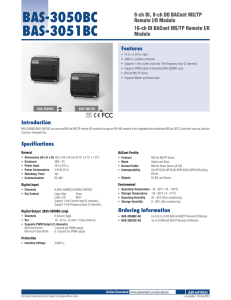
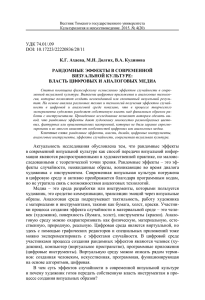
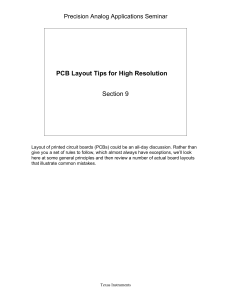
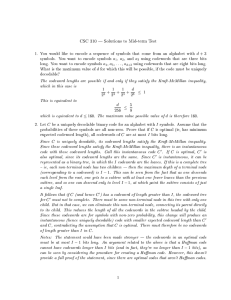
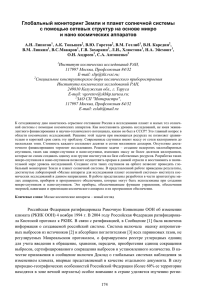
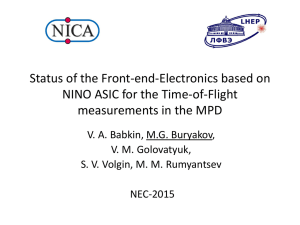
![Этап: 2. Сканирование [Scanning]](http://s1.studylib.ru/store/data/005027200_1-078be7b4757bbc5d820a2b3f8589def0-300x300.png)
